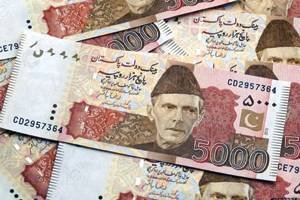WASHINGTON/LONDON: Factories in the United States, Europe, and Asia had a tough time last month due to weak demand, as shown by surveys released on Thursday. This situation raises concerns about a sluggish global economic recovery.
In the United States, manufacturing activity dropped to an eight-month low in July, mainly because of a decrease in new orders. A similar decline was seen in the euro zone, while China’s weak manufacturing affected its Asian neighbors.
However, British factories saw a positive trend, recording their best month in two years with increased output and hiring.
The Institute for Supply Management’s (ISM) US manufacturing Purchasing Managers’ Index (PMI) fell to 46.8 in July, down from 48.5 in June. A PMI below 50 indicates contraction, and manufacturing accounts for 10.3% of the US economy. Despite the decline for the fourth straight month, the PMI remained above 42.5, which the ISM says generally indicates overall economic expansion. Government and Federal Reserve data suggest that the industry has stabilized, with factory production rebounding sharply in the second quarter.
In the euro zone, HCOB’s final manufacturing PMI, compiled by S&P Global, stayed at 45.8 in July, below the 50 mark for over two years. An index measuring output dropped to a seven-month low of 45.6, indicating weak global demand and a lack of growth drivers as the services sector slows. Germany’s manufacturing sector, a significant part of Europe’s largest economy, saw an accelerated downturn, while France’s industry contracted at its fastest rate in six months.
In contrast, Britain’s PMI rose to 52.1, the highest since July 2022, driven by optimism after Prime Minister Keir Starmer’s election victory. The Bank of England cut interest rates to 5% on Thursday after keeping them at a 16-year high for a year. The Federal Reserve also hinted at possible interest rate cuts in September if the US economy follows its expected path. The European Central Bank might follow with two more cuts this year, as predicted by a Reuters poll.
In Asia, Japan’s manufacturing activity shrank, and South Korea’s expanded at a slower pace due to weak domestic demand and rising input costs. China’s Caixin/S&P Global manufacturing PMI fell to 49.8 in July from 51.8, the lowest since October last year, and missed analysts’ forecasts of 51.5. This aligns with an official PMI survey showing a five-month low.
Looking ahead, Capital Economics’ Shivaan Tandon expects below-trend global growth to affect manufacturing across Asia for the rest of the year. Japan’s final au Jibun Bank Japan manufacturing PMI dropped to 49.1 in July from 50.0. Unlike most central banks, the Bank of Japan raised interest rates to 15-year highs and unveiled a plan to slow its bond-buying.










